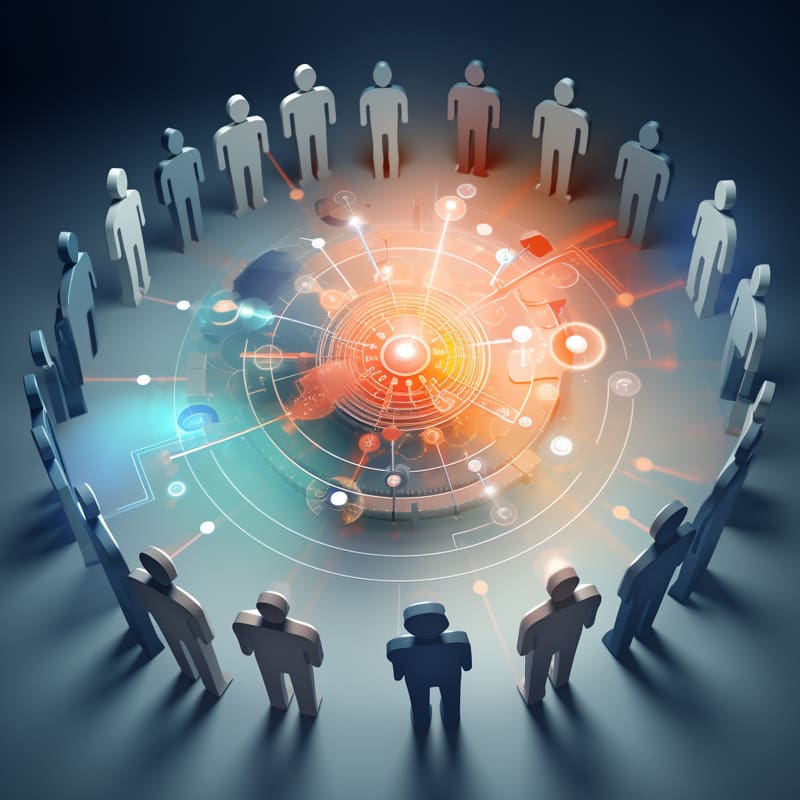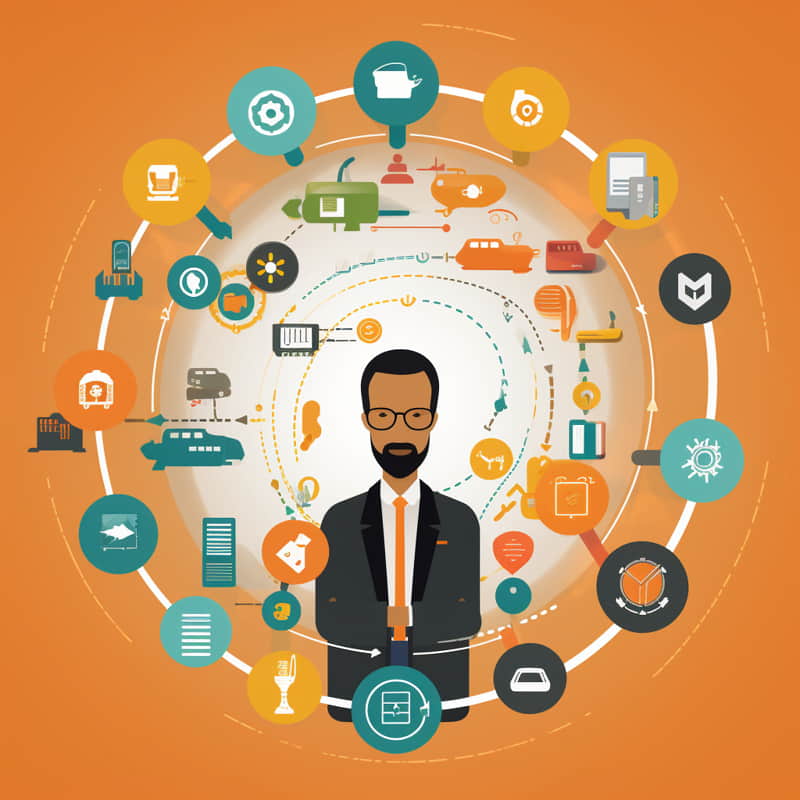Siebel CRM Interview Questions
In this blog, we provide best practices for interview preparation as well as frequently asked questions and answers about Siebel CRM.
We hope that this resource can assist in becoming an adept Siebel CRM user, no matter your experience level or stage of career development.
Customer relationship management (CRM) software such as Siebel CRM or Siebel Salesforce helps businesses manage customer interactions and data throughout their customer lifecycle.
Given its complexity and breadth of features, Siebel CRM interviews may cover an expansive spectrum of questions.
Here we discuss a selection of main ideas and characteristics related to Siebel CRM that should help prepare you for an interview.

1. What is CRM, and why was it developed?
CRM stands for customer relationship management, and it was developed to address the issue of data mismatches and overburdening different departments in a company.
Companies used sub-software or systems to store data, which led to errors and demerits, as the same data was kept in other systems, causing errors and burdening employees.
To address this issue, companies developed CRM systems that kept all data in one system, including marketing, sales, purchase, and support.
2. Why did companies develop CRM systems?
Companies developed CRM systems to address the problem of data mismatches and overburdening different departments in a company.
3. How can CRM systems improve efficiency in various sectors?
CRM systems can improve efficiency in various sectors by streamlining operations, integrating data from different departments, and simplifying workflows.
4. What are the benefits of using a single system to track all aspects of a business?
The benefits of using a single system to track all aspects of a business include accurate data management, improved decision-making, efficient tracking of operations, and streamlined communication.
5. What challenges may companies face during the implementation of CRM systems?
Companies may face challengeswhile implementing CRM systems,including resistance to change, data migration and integration issues, user adoption, and ensuring data security and privacy.
6. What is Siebel CRM?
Siebel CRM is a comprehensive suite of products designed to manage customer relationships.
7. What are some other CRM products available in the market besides Siebel CRM?
Other available CRM products besides Siebel CRM include Salesforce, Zoho CRM, SAP, Microsoft Dynamics, Oracle, and Sugar CRM.
8. What are the characteristics of Siebel CRM applications?
Siebel CRM applications are easy to use and customisable, designed to suit various industries, and divided into five layers: data layer, logical layer, physical layer, business logic layer, and presentation layer.
9. How can new tables be created in the logical layer of Siebel CRM applications?
New tables can be created in the logical layer of Siebel CRM applications by providing table names, column names, types, and spaces.
10. What is the role of the physical layer in Siebel CRM applications?
The physical layer in Siebel CRM applications serves as the database that connects the logical layer to the physical layer, where tables and columns are created and managed.

Siebel CRM Training

11. What are the different parts of the high-level architecture of Siebel CRM objects?
The high-level architecture of Siebel CRM objects is segmented into five parts: SQL, Sybil, data layer, business logic layer, and presentation layer.
12. Design a process for integrating data from external systems into Siebel CRM applications.
A process for integrating data from external systems into Siebel CRM applications can be designed by developing an object integration component and defining the integration rules and mechanisms.
13. What is the purpose of the login button in the Siebel application?
The login button in the Siebel application initiates the login process by sending the user-entered username and password to the SQL server.
14. How does the application object manager contribute to the functionality of the Siebel application?
The application object manager in the Siebel application is responsible for processing user requests, providing a master of the recommendations UI actions, and ensuring smooth navigation through the application.
15. What are the main components of the Siebel CRM e-business architecture, and how do they interact with each other?
The Siebel CRM e-business architecture’s main components are the industry, customer, and assembly applications. These three components interact with each other to provide a comprehensive suite of products for managing customer relationships.
16. What are the advantages of using Siebel CRM for managing customer relationships compared to other CRM software?
Siebel CRM offers unmatched functionality and scalability, making it a market-leading CRM software. Its comprehensive suite of products, core to every industry, customer, or employee application, ensures a holistic approach to managing customer relationships.
17. What are the three business entities introduced in the system?
The system introduces three business entities: account, contract, and open. The system keeps data on the customer’s preferences, questions, and requests, ensuring efficient and accurate business operations tracking.
18. What are the five layers of Siebel CRM applications?
The five layers of Siebel CRM applications are the data layer, the open data layer, the logical layer, the physical layer, and the automation layer.
19. What is the data layer in Siebel CRM applications?
The data layer in Siebel CRM applications is the logical layer, where users create tables and columns.
20. What is the open data layer in Siebel CRM applications?
The open data layer in Siebel CRM applications allows users to view the number of tables in the application and configure new tables.

Siebel CRM Online Training

21. What is the logical layer in Siebel CRM applications?
The logical layer in Siebel CRM applications allows users to create tables by providing table names, column names, types, and spaces.
22. What is the physical layer in Siebel CRM applications?
The physical layer in Siebel CRM applications is the database that connects the logical and physical layers.
23. What is the automation layer in Siebel CRM applications?
The automation layer in Siebel CRM applications involves assigning tasks to a specific component, such as a C and C will perform for the application. These tasks are defined and given to a civil, who will perform the tasks manually.
24. What is the high-level architecture of objects in Siebel CRM applications?
The high-level architecture of objects in Siebel CRM applications is segmented into five parts, including SQL and Sybil.
25. What is the role of the application object manager in Siebel CRM?
The application object manager in Siebel CRM is responsible for processing requests and providing a master of the request. It ensures that the customer can see any actions taken from the UI, such as clicking the “New” or “Query” buttons.
26. What tasks are performed by the application object manager in Siebel CRM?
The application object manager in Siebel CRM checks a database’s login name and password and sends a valid ID once corrected.
Once the login page is configured, it configures the home page, requires a repository file, and configures the web interface. If the login page succeeds, the homepage completes the page and sends an error message. A server component handles the signal.
27. What are the training projects assigned to participants in Siebel CRM?
The training projects assigned to participants in Siebel CRM include fire life signs, medical equipment delivery, apartment management, and significant fat payments.
Additionally, apartment management involves building a new apartment with various business entities, such as retail, flat, and registration. Lab setup involves installing local clients, installing civil IP 16, and providing an activity guide.
28. What are the three main components of the Siebel e-business architecture?
The three main components of Siebel’s business architecture are industrial applications, customer applications, and assembly applications.

29. What are the two main categories of Siebel CRM?
Siebel CRM can be categorised into customer applications, blue EE applications, and industry applications, either vertical or horizontal.
30. What are the modules and user interfaces available in Siebel CRM?
The modules and user interfaces available in Siebel CRM vary depending on the type of industry application and the specific product.
These Siebel CRM interview questions offer an in-depth view of the capabilities and knowledge needed for success when using this program in professional practice.
These interview questions offer valuable insights for both job hunters and enterprises looking for qualified Siebel CRM professionals to fulfill the increasing need for customer relationship management systems.
Wishing you success in all your future pursuits and hoping that our blog has proven useful in helping prepare for a Siebel CRM interview.

Siebel CRM Course Price


Ankita
Author